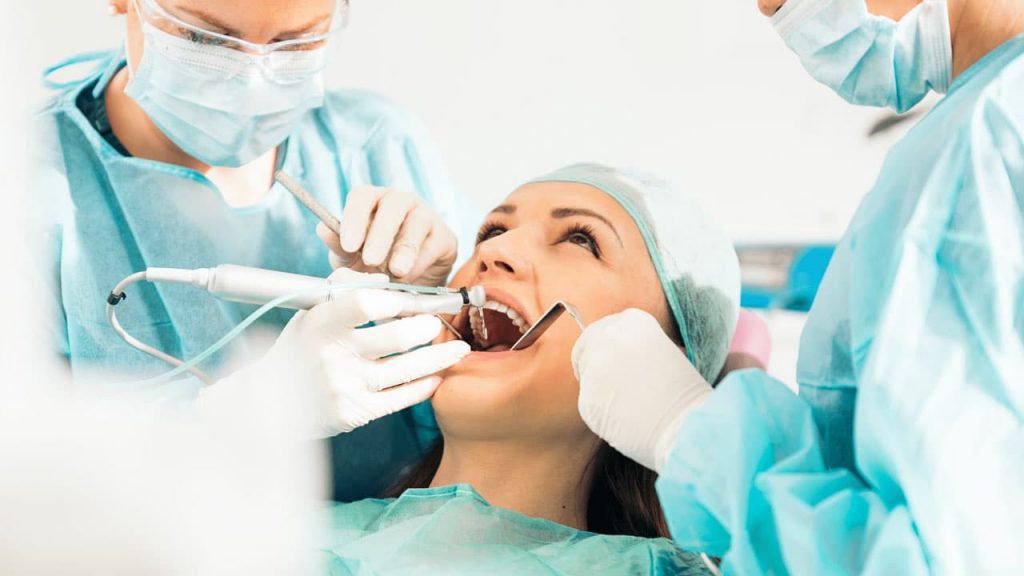As children, we all patiently (or impatiently) waited for our baby teeth to fall out. As adults, when we see a tooth or a segment of a tooth fall out, we become scared and frightened. We have been taught since an early age that your adult teeth are your only teeth, so it is in your best interest to keep them clean and safe of harm’s way.
Coast2Coast understands that accidents are a natural part of life, and it is our duty as civilians to be prepared and take action if an accident occurs, including a knocked out tooth. Our First Aid courses equip you with the knowledge and hands-on training to help yourself or someone in any emergency.
Prevention
The following tips may avoid an injury that results in knocked-out teeth:
- Wear appropriate equipment when playing sports, such as a mouth guard or face mask.
- Always wear a seat belt while in the car and do not eat or drink in a moving car.
Those who participate in physical contact extracurriculars are more likely to suffer an unexpected tooth loss than others; that isn’t to say tooth loss can’t happen to anyone. Many fallen teeth emergencies manifest from slips and falls, or eating food that’s too hard.
What to Look For

Aside from a tooth that is visibly missing, signs and symptoms of knocked-out teeth include the following:
- Bleeding (although this is often very minimal)
- Pain in the mouth
Call 911 and grab your nearest AED if the knocked-out tooth was caused by a forceful blow to the head (especially if the person is unresponsive), or you suspect that there may be other more serious injuries that requires a defibrillator.
Seeing a knocked tooth or teeth can be a scary moment, but if you and all those involved remain calm and collected, there is a good chance the tooth can be put back into place.
Inquire about CPR Training
Do you have questions regarding CPR training? Contact us today! Our customer service representatives are ready to assist you.
Caring for a Fallen Tooth

Control any bleeding by having the person bite down on a clean dressing.
Carefully pick up the tooth by the crown (the whiter part), not the root. Avoid touching the root of the tooth at all costs.
Put the tooth in propolis, egg white, coconut water, whole milk, or saline (if available), and keep it with the person. If none of these are available, wrap the tooth in gauze (or a clean cloth) with some of the person’s own saliva. Put it in a sealed container and label it with the name of the person, the date, and the time of the incident.
Get the person to a dentist as soon as possible. The greatest chance for repair is during the first hour after the tooth is knocked out. Do not put the tooth in salt water, alcohol, or mouthwash. An injury that knocks out a tooth can also be compelling enough to cause jaw, head, or spinal injuries.
Here’s a short video that summarizes the quick steps to take in a knocked-out tooth emergency. Don’t panic, get your first aid training with Coast2Coast and always stay ahead of emergencies.
The quicker you receive help, the better chances that the tooth will be able to be re-implanted back into its socket. If a local dentist is unavailable, go to a hospital emergency room immediately.
Many sources suggest to attempt to put the tooth back, however, this can result in you or the victim accidentally swallowing the tooth! The tooth will preserve its nerves and state if kept in the solutions listed above, with little to no touching of the tooth.
While making your way to the dentist or emergency room, use a cold compress to ease pain and minimize any swelling around the affected area. If there is any bleeding, applying pressure directly using gauze, as it can help to keep bleeding to a minimum. Do not eat or drink anything, including medication, as this could affect the state of your mouth and tooth.
Once arrived at the dental clinic or hospital, a dentist will assess the situation and implant the tooth back into place if doable. They usually put the tooth in splints around the surrounding teeth for 7 to 10 days. If the bone around the tooth also has been fractured, the tooth may have to be splinted for 6 to 10 weeks. All re-implanted teeth eventually need root canal treatment.

How to Stay Prepared
We hope you will never have to go through a serious medical emergency, but circumstances do happen to all of us, and we must be ready. Coast2Coast provides the finest training in CPR and First Aid care, as we value life-saving and emergency training for all our community members.
Our Standard First Aid course equips all our students with proper wound training, including knocked out and fallen teeth. Teeth emergencies are not given a lot of time, so you need to be ready at any moment to help your friends, loved ones, or anyone in need of an emergency. Coast2Coast is here for all your emergency training needs!
Emergency Dental Services
Emergency Dental Services: dentalemergencyservices (Toronto)
Emergency Dental 365: emergency-dental-365 (Toronto)
Dentistry on Dusk: dentistryondusk emergency dental care (Brampton)
Square One Dental Emergency: square1dental emergency dentistry (Mississauga)
Eastgate Dental Centre: eastgatedentalcentre emergency dentist (Hamilton)
Dental Studio: dentalstudiolondon emergency dentist (London)
Ottawa Dental Society: ottawadentalsociety dental emergency
Register for First Aid Training!
We have 24 locations across Canada, find out which facility is closest to you and enroll today!




















2 Comments
I had no idea that getting a tooth knocked out has the potential to cause jaw or head injuries. When my son was playing baseball earlier, he got his tooth knocked out by the ball. It may be best to schedule an emergency dental appointment for him to avoid any bigger problems.
I didn’t know that you can increase the likelihood of having your missing tooth re-inserted by visiting a dentist as soon as possible. My wife lost one of her front teeth when she got into a car accident on her way to work. It may be best for her to find a dentist that will help her ensure that it can be put back in her mouth.